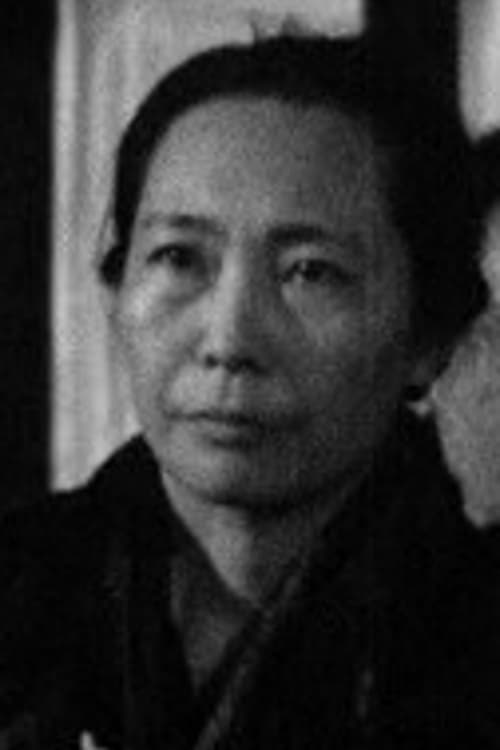Noriko Honma
Nacimiento : 1911-11-29, Yubari, Hokkaido Prefecture, Japan
Muerte : 2009-04-12
Historia
Noriko Honma (本間文子 Honma Noriko, born 29 November 1911 - 12 April 2009) is a Japanese actress whose film work occurred primarily during the 1950s. She was born in Hokkaido. She worked in many of Akira Kurosawa's films, first appearing in Kurosawa's Rashomon as the Miko, also in Ikiru, The Seven Samurai, Akahige, and Dreams.

A narrative feature made from a collage of clips from various films around the world.
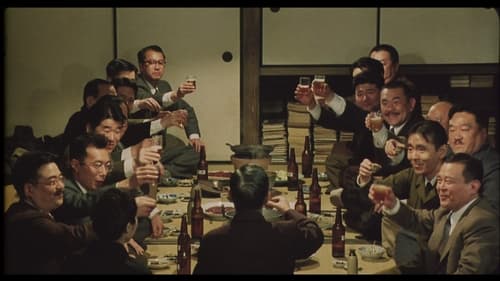
Old lady holding a cat
Tokio, 1943. El profesor Hyakken Uchida abandona su cátedra para dedicarse por completo a su carrera como escritor. Los desastres de la Segunda Guerra Mundial (1939-1945) hacen que pierda su casa y viva con su mujer en una barraca. Pero sus ex alumnos deciden construirle un nuevo hogar, al que se trasladará con su esposa. También se comprometen a celebrar cada cumpleaños del venerado maestro. Durante esas fiestas, juegan como niños y le preguntan al profesor: "Mahda-kai" ("¿Estás listo para irte al otro mundo?"), a lo que él responde: "Madadayo" ("No, todavía no"). (FILMAFFINITY)
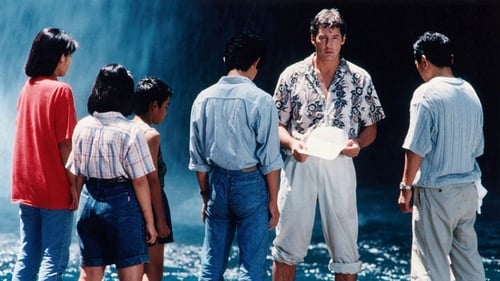
Mourner
Profunda reflexión sobre el holocausto nuclear de Nagasaki desde el punto de vista de una superviviente y sus cuatro nietos. Entre sonrisas y lágrimas, la abuela recuerda la historia de su familia y de la sociedad japonesa de su tiempo, tratando de llegar a comprender mejor el pasado y el presente.

Película compuesta de ocho cortometrajes de veinte minutos cada uno. Son ensoñaciones dispersas, independientes, pero engarzadas entre sí por deseos, angustias y añoranzas. La historia de Yo, desde su infancia hasta su vejez, sirve para mostrar las relaciones del hombre con el mundo, el arte, la espiritualidad, la muerte. Los ocho relatos (extraídos de sueños de Kurosawa) reflejan lo cambios experimentados por Japón a lo largo de un siglo.

Old Woman
Un escuadrón del ejercito japones es transportado por un fenómeno atmosférico hacia el pasado, a una época antigua donde los samurais dominaban Japón. Tendrán ahora que adaptarse y luchar por sus vidas en una tierra en la que la lucha entre clanes era salvaje y cruel.

Tea shop old woman
In the 19th century Edo period, sisters Oshizu and Otaka have sacrificed their personal happiness to work and care for their ailing father. Otaka falls in love, but can’t accept a marriage proposal since her older sister needs to marry first. When Oshizu learns of this decision, she takes matters in her own hands.
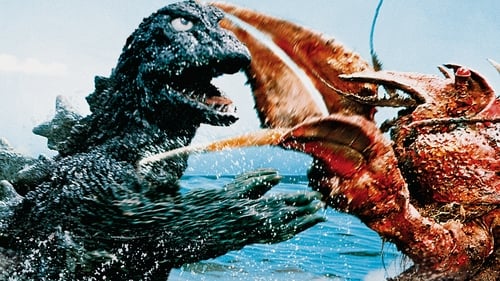
Spiritualist
Una misteriosa isla ha sido colonizada por una extraña organización terrorista de tintes comunistas llamada Red Bamboo, que ha esclavizado a la población indígena y que se dedica a la fabricación de bombas atómicas. En esta isla vive la langosta gigante Ebirah, que se encarga de devorar a todos aquellos que intentan escapar del lugar, hasta que un rayo despierta a Godzilla, dormido casualmente en el interior de una gruta de la isla.

Resident
El joven doctor Yasuoto regresa a su pueblo después de estudiar en Nagasaki, pero, en cuanto llega, sufre una gran desilusión: en lugar de ser nombrado médico del shogun lo envían a una clínica que cuenta con muy pocos recursos y está dirigida por un médico apodado "Barbarroja".
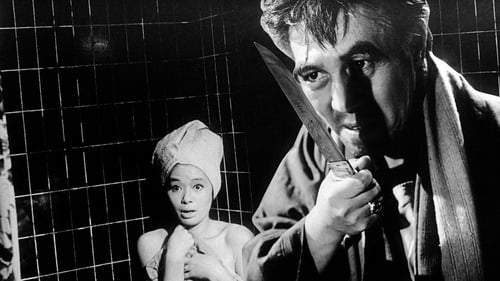
Matsuko - Shiitake's wife
During the mayoral election, two ex-prisoners decide to replace the lucky pen of an annoying candidate with a mini-bomb.
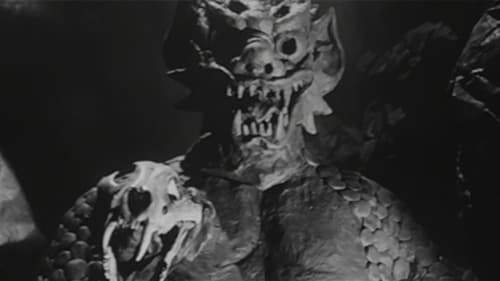
Ken's Mom
In an effort to find an economic means of purifying salt water, a joint U.S.-Japanese military command is set up on an isolated Japanese island where an unusual salt water lake is situated. However, their purifying experiments arouse the prehistoric monster Obaki from hibernation at the lake's bottom, and it proceeds to attack Japan. Although made by a U.S. independent film company, this film was based on a Japanese Toho monster film of 1958, "Daikaiju Varan", from which all of the monster effects scenes and a few incidental dramatic shots were edited into it.
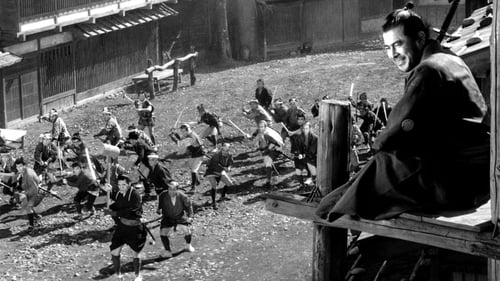
Farmer's Ex-wife
En el siglo XIX, en un Japón todavía feudal, un samurái llega a un poblado, donde dos bandas de mercenarios luchan entre sí por el control del territorio. Muy pronto el recién llegado da muestras de ser un guerrero invencible, por lo que los jefes de las dos bandas intentan contratar sus servicios.

A skilled country doctor's talents are such that he can even perform operations as difficult and novel as removing a patient's kidney for the first time in Japan. Unfortunately for him, however, his wife's addiction to gambling is of such a magnitude that he is down to selling his underwear to make money. The image sticks and he becomes known as the 'underwear doctor.' On the other hand, his successful surgery's patient is so grateful he himself wants to become a physician.

Mineko (Sekine's wife)
Keiko acaba de ver morir a su esposo y tiene que valerse por sí misma. Se convierte en patrona del bar Lilac en Tokio. Además de pagar su apartamento, se siente obligada a ayudar económicamente a su hermano, en paro y enfermo de polio. Yuri, una joven señorita de compañía que trabajaba con Keiko, se marcha tras seducir a Minobe, uno de los más ricos clientes de esta última. Sin embargo, Keiko se opone rotundamente a relacionarse con ricos patronos e insultar la memoria de su esposo, a diferencia de numerosas geishas.

Ryuta and Mineo Komatsu are brothers, both yakuza (gangsters). Mineo, although complicit in crime, even murder, wants out of the gangster life, hoping to become a successful singer instead. Ryuta loves his brother, but Mineo's possible defection presents problems for the gang, and Ryuta realizes he must kill his brother if he wants to survive.

Ken's Mom
When a rare species of butterfly is found in a mysterious valley in Japan, a pair of entomologists go to investigate and find more. They discover Varan, a giant monster, Who decided to leave the valley and head straight for Tokyo.
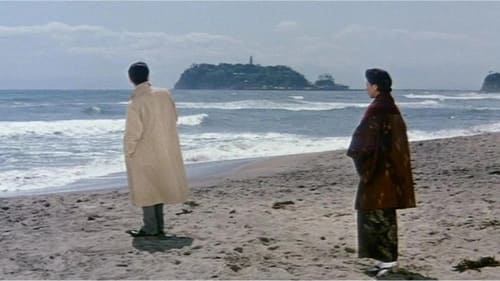
A war widow with a young boy manages a farm with her bossy mother-in-law. When a reporter comes to interview her, the two begin an affair. He turns out to be married and won't leave his wife. Her older brother tries to marry off his children and hang on to/ extend his farm through an advantageous marriage in the face of threatened land confiscation and the desire of his children to get comfortable urban jobs instead of the backbreaking work in the paddy fields under parental control.

Mariko's Mother
Ultra-perky model likes single freedom but feels ryosai kenbo ("good wife, wise mother") pressure, exemplified by her bored-to-tears sister.

An Ishiro Honda film. The first part of A Rainbow Plays in My Heart released the same day as the second film.
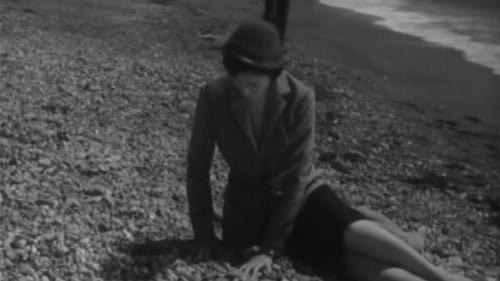
Nanny
An Ishiro Honda film. The second part of A Rainbow Plays in My Heart released the same day as the first film.
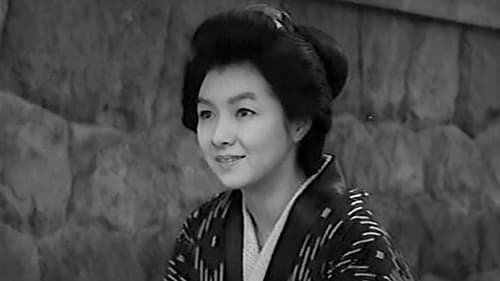
Otora, the foster mother
A woman marries, gives birth to a stillborn child, and divorces, falls in love with a hotel-keeper, only to find herself subordinated to his drive for success, takes up with a tailor who cannot console himself with her strong personality.

Natsu, Chiya's Mother (uncredited)

Kiyoko (Takamine Hideko) and her husband want to open a coffee shop. She becomes increasingly close to the bank clerk (Mifune Toshiro) she's asked for a loan.
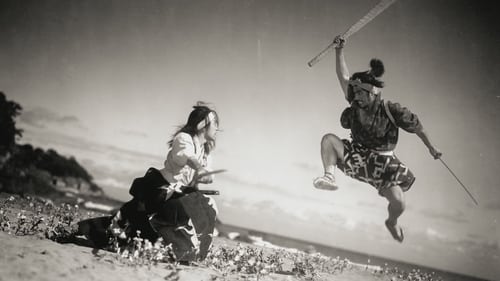
(uncredited)
Takezo abandona su condición de samurai errante para vivir tranquila y humildemente con su amada Otsu, rechazando trabajar como maestro samurai para el líder del clan más poderoso del Japón. No obstante, Takezo accede a luchar con el joven y habilidoso guerrero Sasaki Kojiro. El combate final tendrá lugar en la isla Ganryu.
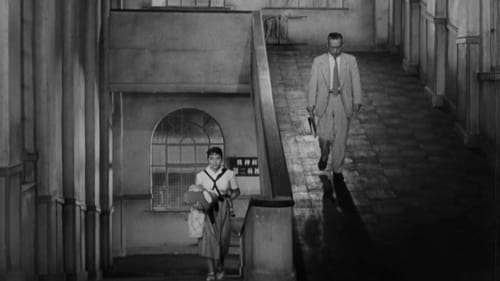
Worker family member
Poco después de terminada la Segunda Guerra Mundial (1939-1945) Kiiji Nakajima, un anciano atemorizado por las consecuencias del bombardeo de Hiroshima y Nagasaki, vive obsesionado con la idea de construir un refugio antiatómico. Sin embargo, cuando algún tiempo después se plantea emigrar con su familia a Brasil para evitar la amenaza nuclear, su decisión tropieza con la incomprensión de todos los que lo rodean.
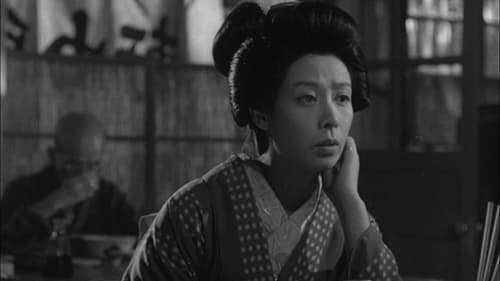
The story of a couple, a spoiled son and a down-to-earth girl, in Osaka in the early Showa era. The film won the prestigious Blue Ribbon awards for best director, best actor (Morishige) and best actress (Awashima), and the Mainichi Concours award for best actor and best screenplay (Yasumi Toshio). It ranked second (after Naruse Mikio’s Ukigumo) on the Kinema Junpō top ten films for the year.

Forced on the road by yakuza obligations, a man sets out on a reckless journey to Tsumagoi. Movie posters for local cinemas were often displayed at sento (public baths) too. The handwritten text on the bottom here announces the film will play at Hassen for 3 days.

Old Woman of O-Haru
Lonely youth Shinji meets Hatsue, a pretty pearl diver, on the beach and the two fall in love. But Shinji has a rival for Hatsue's affections, Yasuo.
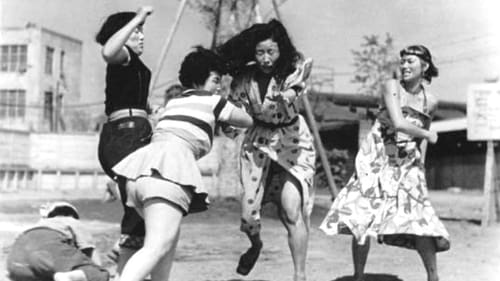
Tsuru, una mujer con problemas mentales, es protegida por Toku y Pinchan, dos hombres que viven en una villa de emergencia, en una zanja al costado de las vías del ferrocarril. La fábrica en la cual trabajaban ha sido cerrada por una huelga, por lo que ambos hombres gastan tiempo y dinero apostando en las carreras de bicicletas. Tsuru trabajaba en una fábrica textil, pero un grupo de jóvenes robó todo el dinero de su indemnización. La particular comunidad de la zanja incluye a Chu, un actor que también está un poco loco, y Hiromi, quien viste siempre un traje elegante y de quien se dice es la amante de un hombre poderoso.

A legendary gangster raises himself out of a small town and gathers followers on his rise to power.
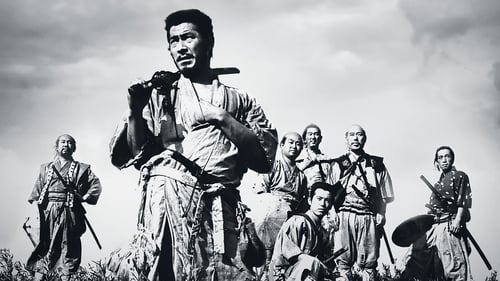
Woman Farmer
Una banda de forajidos atemorizan a los habitantes de un pequeño pueblo, saqueándolos periódicamente sin piedad. Para repeler estos ataques, los aldeanos deciden contratar a mercenarios. Finalmente, consiguen los servicios de 7 guerreros, 7 samurais dispuestos a defenderlos a cambio, tan solo, de cobijo y comida.

En un pueblo campesino no muy lejos de Tokio, Akaza y su esposa Riki se preocupan por el porvenir de sus hijos. Inokichi, el primogénito, es vago y pendenciero. De las dos hermanas, la mayor, Mon, está en Tokio, y a la menor, San, intentan casarla con un comerciante local. Mon aparece un día anunciando que está embarazada. Inokichi, encolerizado, pelea con su hermana, a pesar de que ambos se llevaban muy bien durante la infancia.

(uncredited)
A story of unhappy youths and the perils of lack of sex education.
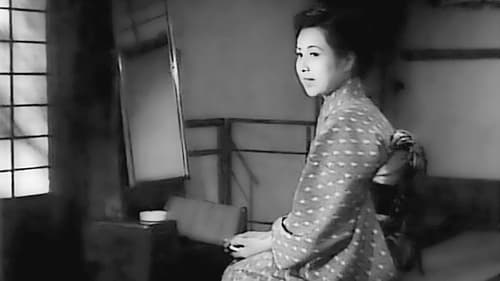
Ten years into a marriage, the wife is disappointed by the husband's lack of financial success, meaning she has to work and can't treat herself and the husband finds the wife slovenly and mean-spirited: she neither cooks not cleans particularly well and is generally disagreeable. In turn, he alternately ignores her and treats her as a servant. Neither is particularly happy, not helped by their unsatisfactory lodgers. The husband is easily seduced by an ex-colleague, a widow with a small child who needs some security, and considers leaving his wife.

Gosho’s most celebrated film both in Japan and the West, Where Chimneys Are Seen is perhaps the most compelling example of his concern for, and insights into, the everyday lives of lower-middle-class people. Based on Rinzo Shiina’s novel of the absurd, the film depicts the lives of two couples against the backdrop of Tokyo’s growing industrialization during the 1950s.

A married couple looking for an apartment move in with the husband's co-worker, a widower. The husband becomes jealous of the widower and his wife.
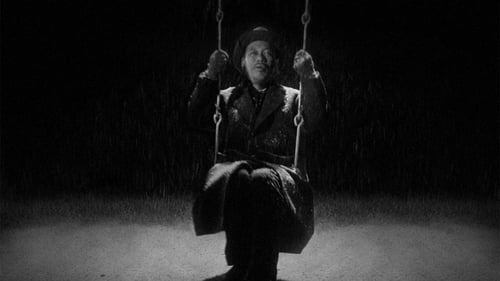
Housewife
Kanji Watanabe es un viejo funcionario público que arrastra una vida monótona y gris; sin embargo, no es consciente del vacío de su existencia hasta que le diagnostican un cáncer incurable. Con la certeza de que el fin de sus días se acerca, surge en él la necesidad de buscarle un sentido a la vida. Y cuando lo consigue se produce un cambio radical en su actitud respecto a los demás.
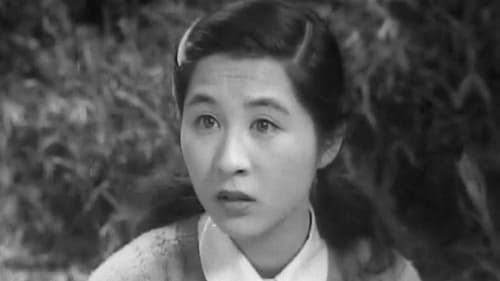
Mino Hirai
'Madre' es la historia de una madre pobre y trabajadora, con un marido enfermo, que se sacrifica para mantener a su familia en los suburbios de Tokio. La película define "Shomin Geki", un género cinematográfico japonés que presenta una representación realista de la clase baja económica, contada con elementos de comedia ligera y melodrama. Esta es la obra más conocida del director Mikio Naruse, aclamado por los historiadores de cine japoneses como un igual a Kurosawa, Ozu y Mizoguchi, pero subestimado en Occidente.

Otoku
Soichi Ataka is the eldest son of Ataka family. Although mentally challenged, he's a person with a gentle heart. Soichi's wife, Kuniko is devoted to her husband and together the couple runs the family farm. Their happy family life comes to an abrupt halt when Soichi's half-brother, Joji returns with his wife Masako after failing in a business.

Japanese "kayo" film based on the song "Ieraishan" by Yoshiko Yamaguchi.
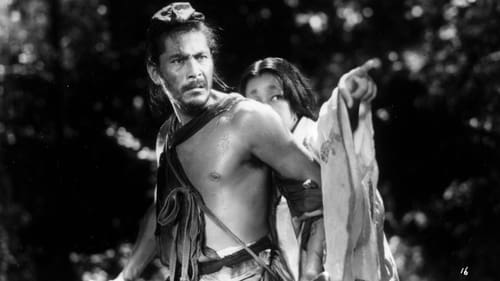
Medium
Japón, siglo XII. En Kioto, bajo las puertas del derruido templo de Rashomon, se guarecen de la torrencial lluvia un leñador, un sacerdote budista y un peregrino. Los tres discuten sobre el juicio a un bandido, acusado de haber dado muerte a un señor feudal y violado a su esposa. Los detalles del crimen son narrados desde el punto de vista del bandido, de la mujer, del señor feudal -con la ayuda de un médium- y del leñador, único testigo de los hechos.
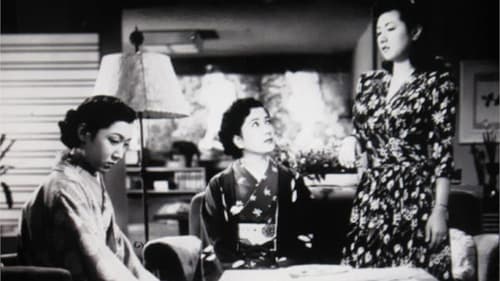
Itakura's mother

Sanpei's mother
An attempt is made to suppress a journalist's investigation of collusion between a rural police chief and the local gangster bosses.
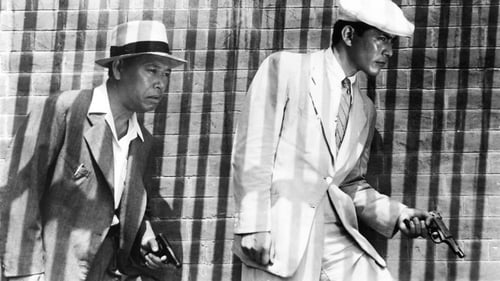
Wooden Tub Shop woman
Ambientada en la postguerra japonesa tras la II Guerra Mundial (1939-1945). Con la estructura del thriller americano y los convencionalismos japoneses, narra la historia de un joven detective al que roban su pistola. Agobiado por un sentimiento de deshonor más que de pérdida, emprende, con un veterano compañero, una frenética e incansable búsqueda que lo lleva a los bajos fondos de Tokyo.
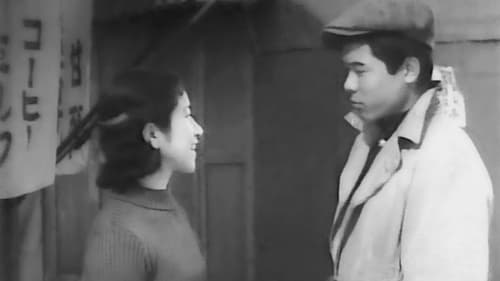
Ishimura's wife
The Whole Family Works, Mikio Naruse's adaptation of a Sunao Tokunaga novel, feels more of a piece with the writer/director's quietly observant and psychologically charged later work. For the Naruse-familiar, it is an anomaly only in its placement within his filmography—indeed, this could be a film made by the elder, stasis-minded Naruse momentarily inhabiting, through a metaphysical twist of fate, his stylistically exuberant younger self. Set in depression-era Japan around the time of the Sino-Japanese War (which the director evokes, during a brief dream sequence, by dissolving between children's war games and actual adult warfare), The Whole Family Works gently observes a family coming apart at the seams. Ishimura (Musei Tokugawa) is the jobless father of nine children.
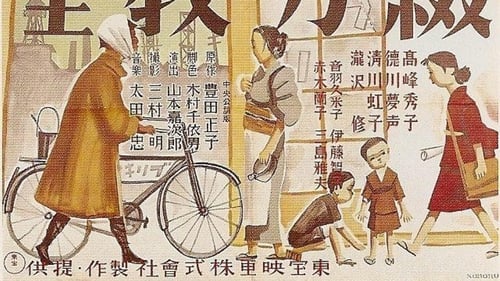
Aunt
Based on an autobiographical story by Toyota Masako.


